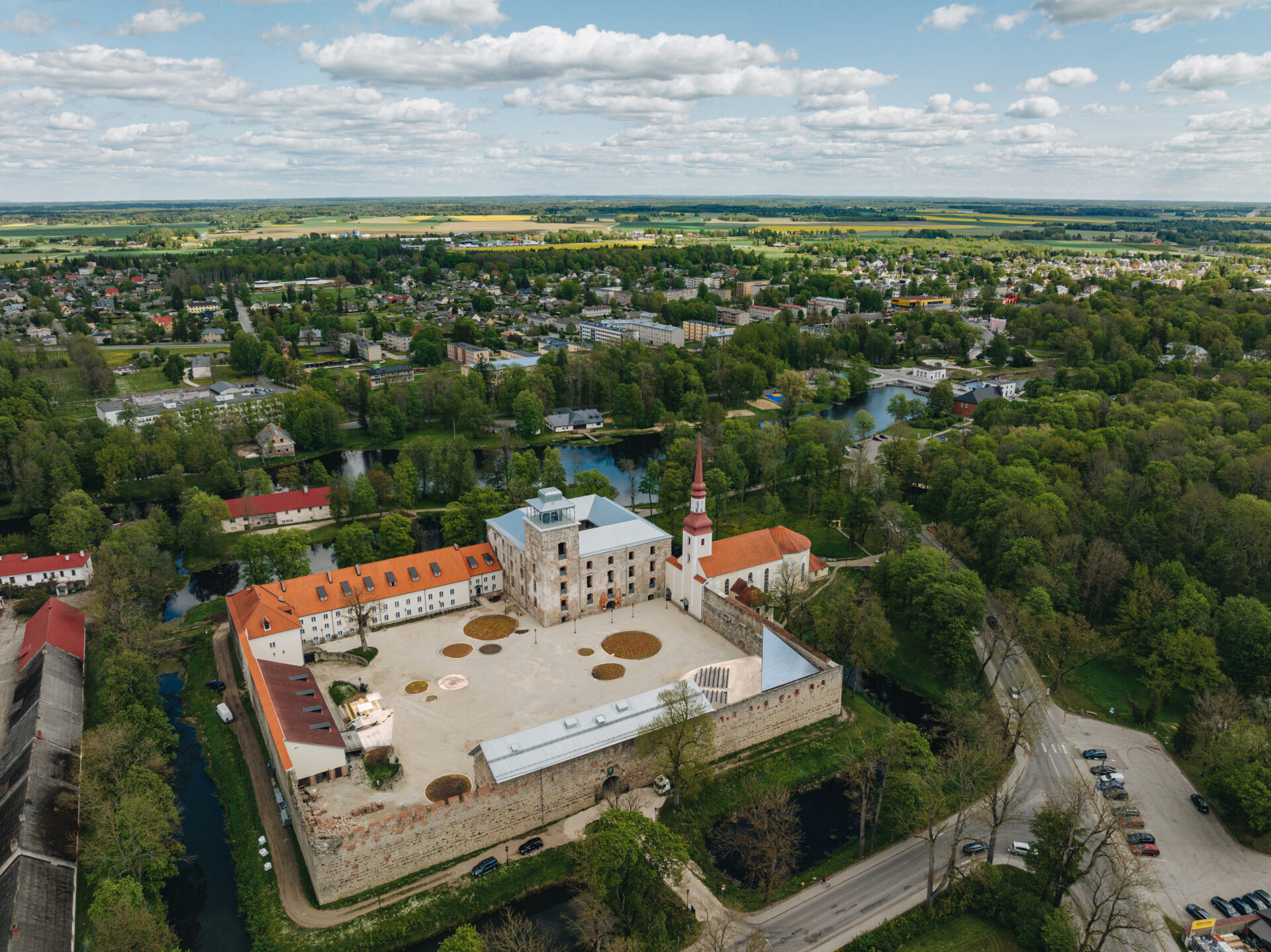
The Põltsamaa castle complex encompasses various key components, each with its unique history and purpose. Together, these structures form one of Estonia’s most significant architectural ensembles.
At the heart of this complex is the convent building, which dates to the castle’s original construction in 1272. Over time, it underwent several transformations, including when it served as the residence of the King of Livonia, Magnus, from 1570 to 1578. This led to the conversion of the old convent building into living and representative rooms. Despite facing repeated plundering, the fortress endured and was eventually rebuilt into a magnificent Rococo-style palace in the 18th century, thanks to the vision of Woldemar Johann von Lauw. Tragically, in 1941, fire consumed both the castle and the church, leaving the castle mostly in ruins.
Efforts to restore the castle complex involved meticulous preservation and restoration work on the convent building. The walls of this historic structure were preserved and roofed, and the tower dome was carefully restored. A distinctive feature is the uniquely designed concrete staircase, which provides an open and airy experience while offering spectacular views through the historical seven-story tower. At the tower’s zenith, a new steel dome with a viewing platform was erected, reminiscent of the historical dome. The architectural additions in this area distinguish themselves from the old with their grey steel tone, creating a harmonious contrast against the backdrop of grey limestone and red brick. The natural wood tones of the roof structures add warmth to the buildings, and the new parts, designed with utmost simplicity, blend seamlessly with the dignified old architecture.
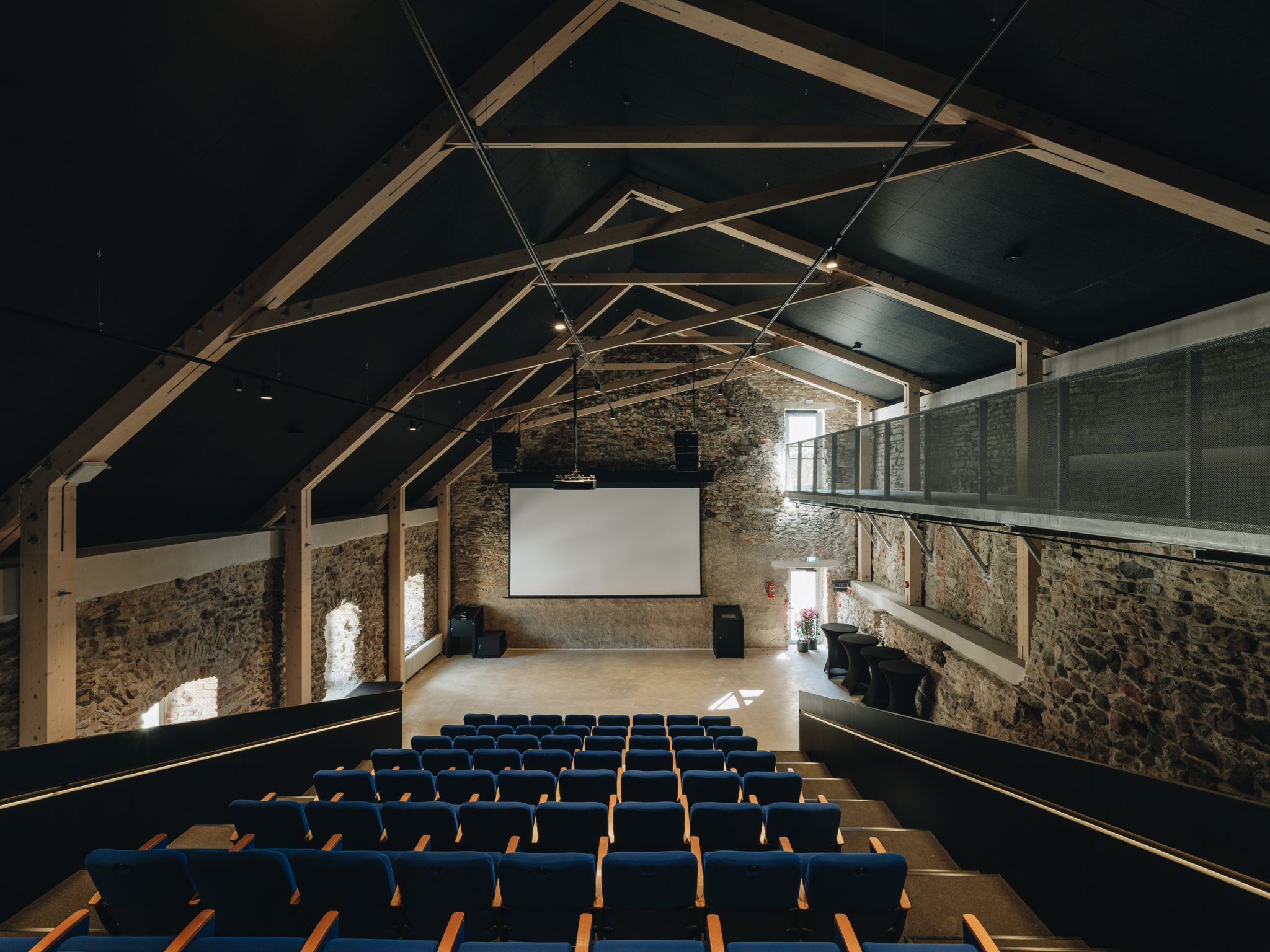
Seminarruum
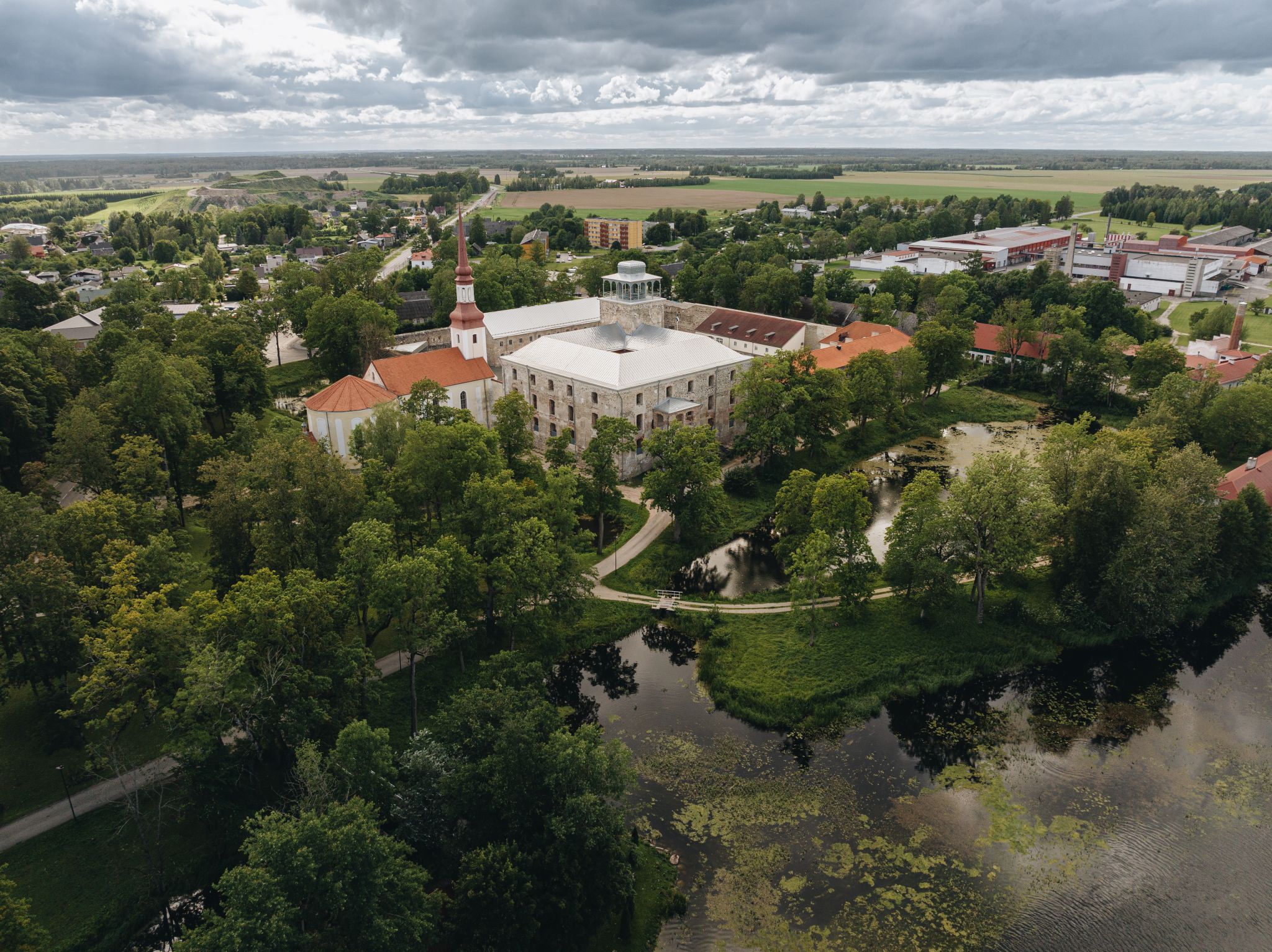
Põltsamaa lossikompleks
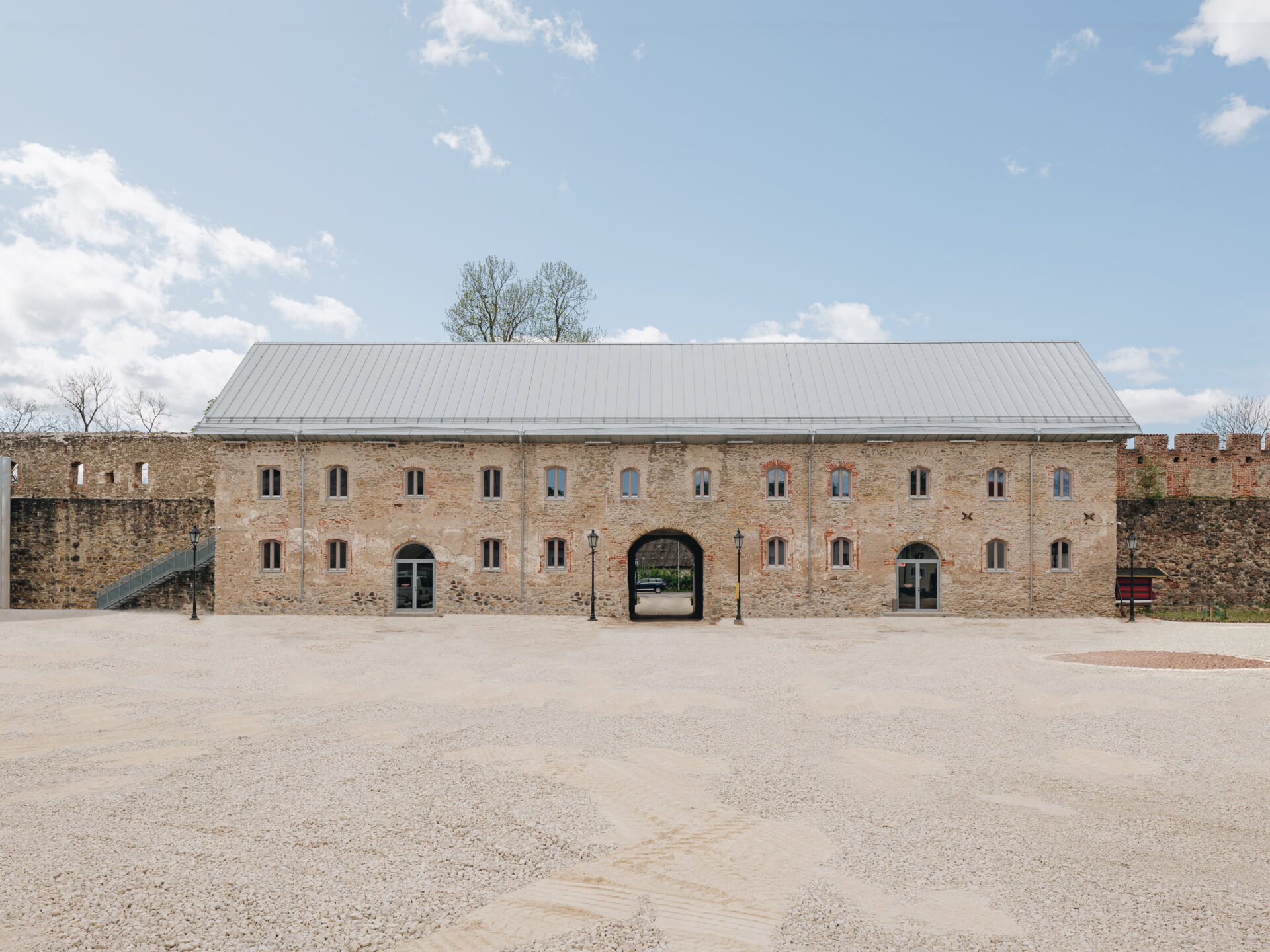
Väravahoone
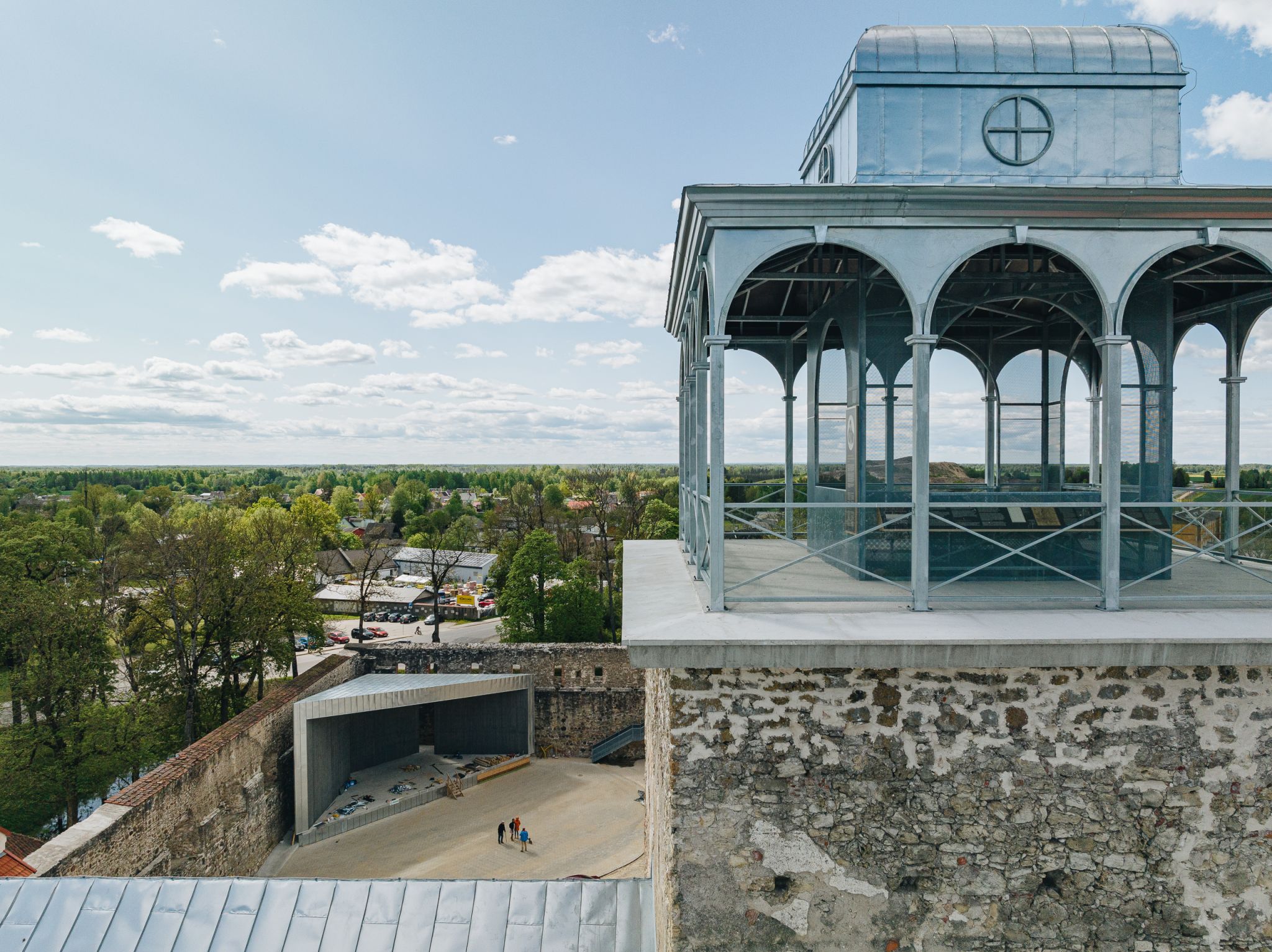
Lava ja konvendihoone vaatetorn
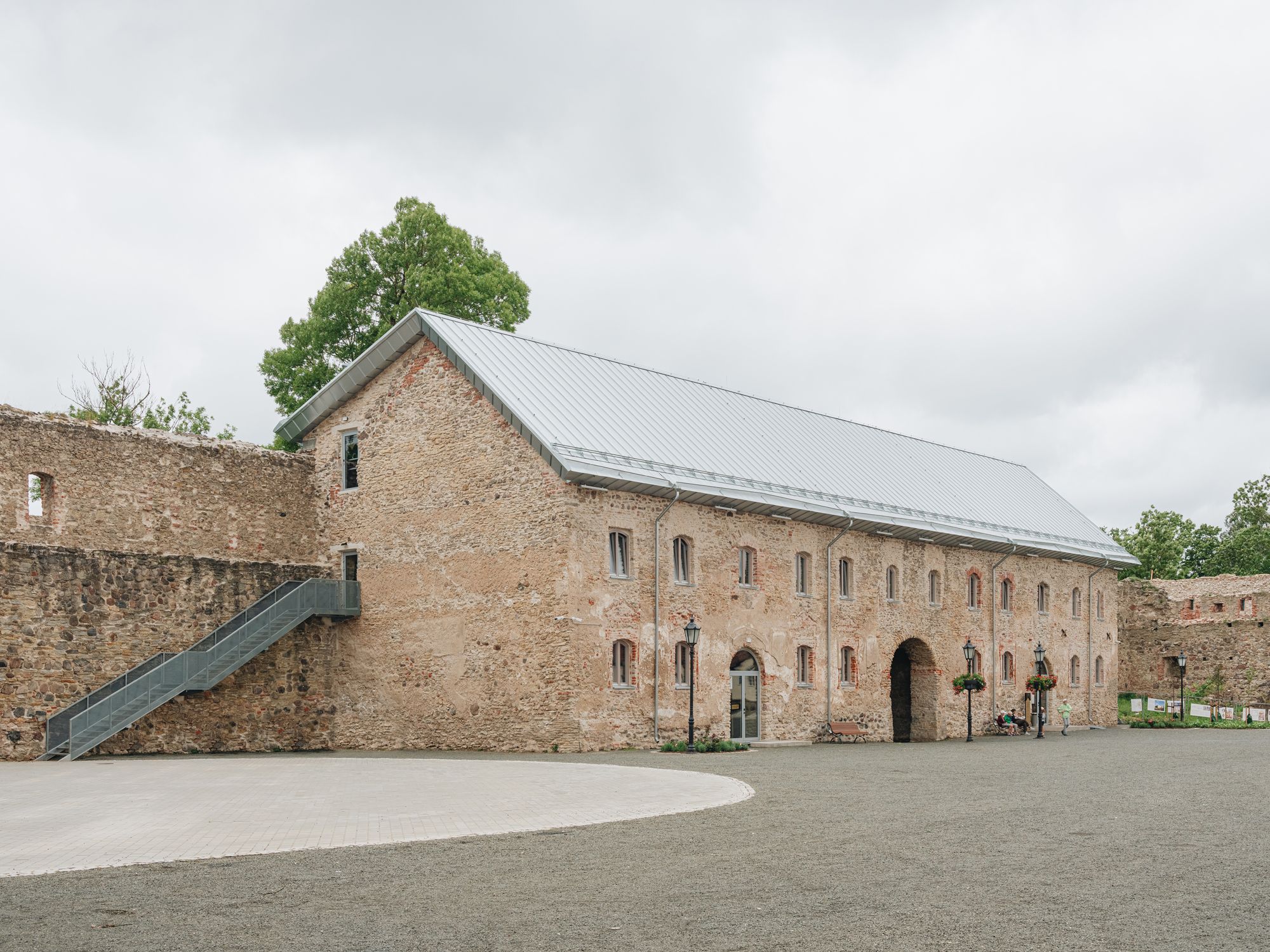
Väravahoone

Ekspositsioon